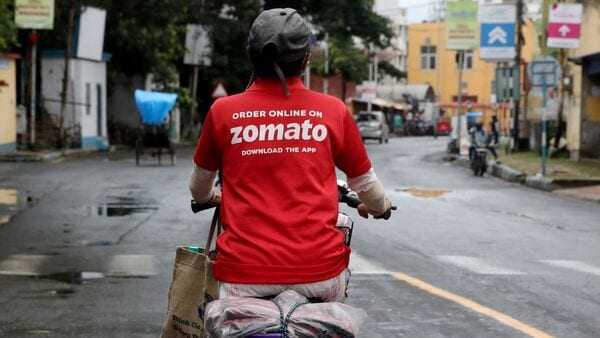Zomato, the popular food ordering and delivery platform, has tied up with HDFC Pension, one of the largest pension fund managers in the country, to introduce the ‘NPS (National Pension System) Platform Workers Model’ for its delivery partners.
The collaboration will enable independent gig workers, onboarded on Zomato as delivery partners, to make small and regular contributions towards a pension fund that will enable them to achieve long-term financial security. These workers will receive funds either as a lumpsum or a monthly pension upon retirement. They will also have the option of portability, allowing them to carry their pension-related benefits forward as they progress in their careers.
More than 30000 delivery partners onboarded on Zomato have already generated their PRANs (Permanent Retirement Account Numbers) within 72 hours of this integration, Zomato said. The platform said it is committed to enabling over 1 lakh delivery partners with their NPS retirement accounts by 2025.
Digital integration has been done to make the onboarding process smooth and hassle-free by using the existing KYC or e-KYC of the gig workers, with their consent, at the PRAN generation level, it said. Additional details can be submitted by the gig workers subsequently, the company said. Zomato operates on a gig-first model, supporting an average of 5.09 lakh independent monthly active delivery partners as of Q1 FY26.
“With HDFC Pension, we’re taking a step beyond daily livelihood—towards long-term financial security and assurance in retirement (of delivery partners). This is part of our larger commitment to building stability and dignity for those who power India’s gig economy,” said Aditya Mangla, CEO, Zomato.
“Through the ‘NPS Platform Workers Model’, such individuals (delivery partners) can now start planning for their retirement. This model not only enables them to plan for their retirement but also contributes towards bringing a larger section of our population under the umbrella of long-term financial security,” said Sriram Iyer, Managing Director and CEO, HDFC Pension.
HDFC Pension has six NPS products, including retail, corporate, and for government employees. NPS returns are market-linked and depend on the performance of the underlying instruments. When an individual contributes to NPS, the funds are invested across four asset classes—equity (E), corporate bonds (C), government bonds (G), and alternative investment funds (A).
While the E option fund primarily invests in equity markets, offering the potential for high growth but also carrying higher risk, the C option invests in debt instruments of companies, generally providing stable returns with moderate risk.
The G option invests in securities issued by the government, which are considered low-risk with potentially lower returns compared to equity. The A-type fund has investments in instruments like REITs (Real Estate Investment Trusts), InvITs (Infrastructure Investment Trusts), etc., offering diversification but potentially higher complexity and risk.
NPS offers two accounts and two choices
Tier I account: This is the primary retirement account that comes with tax benefits and limits on withdrawals until retirement (except under specific circumstances). The returns generated in Tier I play an important role in building your retirement corpus.
Tier II account: This is a voluntary savings account related to your PRAN. It offers flexibility for withdrawals but does not have the same tax benefits as a Tier I account. The NPS Tier II returns can help in your short to medium-term savings goals alongside your primary retirement fund.
Active choice: This option allows you to actively decide the allocation of your funds across the four asset classes (E, C, G, and A). You can decide asset allocation based on your risk appetite and market outlook, directly influencing your potential national pension scheme returns.
Auto choice: This provides a default investment strategy that is based on your age. As you age, the allocation gradually shifts from higher-risk assets like equity to lower-risk options like government bonds.
Allirajan M is a journalist with over two decades of experience. He has worked with several leading media organisations in the country and has been writing on mutual funds for nearly 16 years.
For all personal finance updates, visit here.
Disclaimer: Mint has a tie-up with fintechs for providing credit; you will need to share your information if you apply. These tie-ups do not influence our editorial content. This article only intends to educate and spread awareness about credit needs like loans, credit cards, and credit scores. Mint does not promote or encourage taking credit, as it comes with a set of risks, such as high interest rates, hidden charges, etc. We advise investors to discuss with certified experts before taking any credit.




